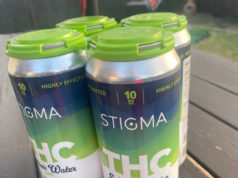In the first year after the Fort Worth City Council banned public drinking near homeless shelters and treatment centers, police issued more than 500 citations under the new ordinance. Last year, citations had fallen to about half that number.
Neighborhood leaders and those who work with the homeless say the ordinance has been a success in improving the quality of life for homeless citizens as well as other residents and business owners in the area — and that citations probably have dropped off because the ban is now widely known and, for the most part, abided by. Too, the overall number of homeless people in Fort Worth has dropped in recent years.
But some local residents — homeowners as well as the homeless — say they haven’t seen much change.
In 2008, Dan Hammack testified before an administrative law judge as part of a successful community effort to keep the Star Food Mart, at the corner of East Lancaster Avenue and Riverside Drive, from getting its permit to sell alcohol renewed.
He told the judge how he and his family, longtime residents of leafy East Stella Street, about a half-mile from the store, were “bombarded every day” by the homeless and their alcohol use: fights, empty bottles left behind, people urinating on his lawn.
These days, he still hears the drunks outside his house. “There was two of them this morning,” he said recently, describing a 2 a.m. argument loud enough to shatter any possibility of a good night’s sleep.
And Star Food Mart once again sells alcohol — including the chilled 24 oz. cans of beer favored by street drinkers — after the family-owned store reached a compromise with the local Near East Side Neighborhood Association to be more watchful against loitering and to avoid selling to obviously drunk customers.
That store and another across the street are on the strip of Lancaster where most of Fort Worth’s homeless shelters and service centers are clustered to assist an estimated 1,000 men, women, and children each day. State officials estimate that more than a quarter of the homeless suffer from chronic substance abuse.
Karen Knowlton, 55 and homeless, said she’s not a drinker. She was one of about 200 people gathered at a private park just south of Lancaster on a recent Saturday for a meal of hot dogs, salad, and soda.
Public drinking is “about the same” as it’s always been, she said. “When it comes to tickets [for public drinking], people don’t care.”
But Toby Owen, executive director of the Presbyterian Night Shelter, the city’s largest emergency shelter, praised the effectiveness of the ordinance in helping maintain order near the shelters. Passed in 2007, it bans public alcohol consumption within 1,000 feet of homeless shelters and treatment centers. It was the first measure of its kind enacted in Texas.
Police have issued more citations at Presbyterian’s address than any other location — at least 185 since the ban took effect.
A warning usually convinces someone to leave. “If it is someone we know that will cause problems, we will call the police,” Owen said.
The decrease in citations “doesn’t surprise me,” said Neale Mansfield, vice president of the Near East Side Neighborhood Association, which encompasses areas both south and north of East Lancaster. “That’s really because of the acceptance … of that law.”
Mansfield also heads men’s ministry efforts for Feed by Grace, a homeless outreach program. “Before the ordinance was passed, it [drinking] was certainly more widespread and evident,” he said.
However, he also said he has seen police “drive by people with a sack in their hand sitting on the side of the road” and do nothing.
Mansfield oversees weekly meals for the homeless at the site known as Unity Park. In line for food at one such meal was Angela Jones, a homeless woman who gave her age as “50-ish.” She said drinking in the neighborhood is “just a little better” than it used to be.
Drinking worries her because it leads to fights, she said, but she also worries about the amount of crack cocaine in the neighborhood.
Dan O’Connor, 47, said he’s gotten a ticket for public drinking. Police attention to drinking is “absurd, because there’s a lot of other stuff going on, “he said. “There’s more crack cocaine going on than booze.”
Jones said she was happy about a new storefront police station on East Lancaster, which officially opened April 12. Two bike-riding officers, working out of the storefront, have begun patrolling the area to make the police presence more visible.
Fort Worth Police Major Billy Cordell has been involved with the storefront project for years. He said there has been no change in the department’s policy toward enforcing the public drinking ordinance. He suspects lower citation numbers mean people simply have gotten the message.
He did say that the department is changing its attitude somewhat toward policing in the East Lancaster area. The storefront, he said, is about “connecting resources and service providers to meet the needs of that community.
“We really wanted to change some of our philosophy and focus [away] from strictly enforcement,” Cordell said. Police realize, he said, that “we’re never going to arrest our way out of the problems we see over in that area.”
As far as crack cocaine on the streets, “it’s a concern that the shelter directors have brought to us,” he said.
Mansfield said he thinks open drug dealing peaked a couple of years ago, a change he attributes to police having “stepped up their efforts in a really good way.
“They made a difference,” he said, though he added that he doubts drug use has actually gone down.
About the alcohol sold in the neighborhood, Mansfield said he could see two distinct perspectives on the Star Food Mart’s permit being renewed.
“If they’ve done everything that the law required of them, then constitutionally speaking, it just wouldn’t be right to stand in the way of that,” he said. “Now, morally speaking, and as far as what’s best for this neighborhood, then … I sure wish it hadn’t taken place.”
Flora Brewer headed the Near East Side Neighborhood Association from 2002 to 2006 and helped push for the public drinking ban, as well as for changes at local corner stores.
In addition to Star Food Mart, another corner store, A-1, had its license challenged by a formal community protest in 2006. It went for about two years without selling alcohol.
After the denial of the alcohol permits, “what really happened was that through the process, the neighborhood association and store managers got to know each other,” Brewer said, with store managers becoming more aware of neighborhood concerns.
D.J. Tanwar, the college-age son of Star Food Mart owner Shashi Chauhan Tanwar, explained that his family worked hard to win over residents, attending association meetings to let people know they cared about the neighborhood too.
Mansfield described things slightly differently: The owners of Star Food Mart and their attorney did “all they could to kiss up to everybody.” But he admitted that the store had “cleaned up their act.”
In the past, intoxicated customers hanging around the store “definitely was a problem,” said Tanwar, who has worked as a security guard for the store, which began selling alcohol again in March 2010, according to online TABC records.
Tanwar said Star Food Mart no longer sells 40 oz. containers of beer or drinks with excessive alcohol content, though 32 oz. bottles were on display at both Star Food Mart and A-1.
Greg Scott, president of the Near East Side Neighborhood Association, said there is no written agreement outlining what’s prohibited from sale at the corner stores. The key to the truce is the stores being open to visits by members of the neighborhood association, he said, noting that the stores rely on alcohol sales and “don’t want the TABC on their back.”
Hammack doesn’t like Star Food Mart, but he complained more about Beautiful Feet, a homeless ministry three blocks south of Stella, near Exeter Street and East Vickery Boulevard. A nearby corner store sells 40 oz. bottles of malt liquor. Efforts at stopping alcohol sales at that store have fizzled, he said.
Owen said that homeless people trying to stay sober find it tough to walk past other people — in some cases their friends — drinking on the street.
Otis Thornton, the city’s homelessness program director, said the ordinance is aimed at improving public safety more than helping addicts.
The city’s ambitious 10-year plan to reduce homelessness, unveiled in 2008, includes quarterly reports produced by University of Texas at Arlington researchers examining progress toward specific goals. The November 2011 report noted that about half the homeless people referred for substance abuse programs in a recent eight-week period never entered treatment.
Owen acknowledged that homeless people just trying to survive from day to day often won’t go unless case managers walk them over to the treatment facility immediately.
Thornton said the most recent count of the homeless population showed a 19 percent decrease from 2007 to 2011. He said problems experienced by residents living near East Lancaster should improve as homelessness declines.
Scott said that since the drinking ban went into effect, he’s seen fewer broken beer bottles littering the neighborhood. But he acknowledged that public drinking among the homeless isn’t going to go away.
Still, “We kind of got what we want out of [the ordinance],” he said. “I think it’s really served its purpose.”












